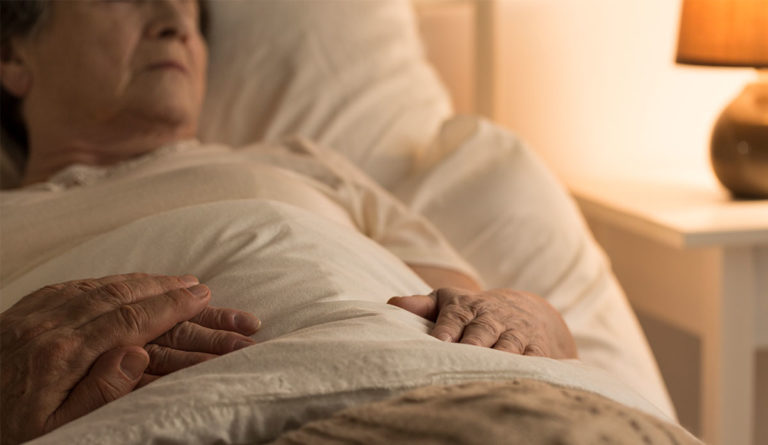Death’s Witness: The Toll on Family Caregivers
Families need thorough educational, planning, and support resources, to mentally prepare for providing end-of-life care.

Read Time: 4 minutes
Published:
Help! My Grandma’s cry jolted me awake. The clock read 3:00 a.m. I stumbled down the hallway and knelt by her bedside. “What’s wrong Grandma?” I asked. No answer. Just a glassy-eyed stare, her face a grimace of pain.
In some ways, my Grandma’s death was unsurprising. She was 89-years-old with heart problems and worsening kidney disease. What shocked me was not death itself, but the way I saw death take over her body. For eleven days I helped provide her in-home hospice care, watching as she lost the ability to speak, swallow, and eventually breathe. I expected the daily bouts of grief. What I didn’t expect was the constant weight of fear and self-doubt.
My Grandma made it clear she wanted to die at home – a sentiment shared by more than 70% of the US population. I too would prefer to pass in the comfort of my own bed, rather than a fluorescent-lit hospital room. Long-term care facilities can also cost thousands of dollars per month, which many families cannot afford.
It makes sense why more people are turning to in-home hospice for their end-of-life care. Hospice begins when patients have less than six months to live. The focus of care shifts from finding a treatment or cure, to managing the person’s comfort and pain. Studies show that patients who receive hospice and other types of palliative care experience improved mood and quality of life.
Hospice agencies typically provide families with a small team of professionals, such as a nurse, health aide, and social worker. Families also receive supplies like bandages, adult diapers, and pain medication.
I constantly questioned whether we were alleviating her pain, or exacerbating it.
Despite this support, we often felt ill-equipped to handle my Grandma’s 24/7 care. I constantly questioned whether we were alleviating her pain, or exacerbating it. I struggled to balance my family, school, and work obligations. And my sleep and exercise habits went out the door. These disruptions and emotional strains worsened my overall caregiving burden. High caregiving burden is associated with anxiety and depression, and can even cause PTSD.
With the United States’ rapidly aging population, more families will become caregivers in the near future. Yet, most Americans remain seriously uneducated about what hospice entails. Families need thorough educational, planning, and support resources, to mentally prepare for providing end-of-life care.
Hospice staff have the knowledge and skills to help families provide comfort for a dying loved one. However, their visits are often short and infrequent. Perhaps more time with hospice staff to ask questions and take part in hands-on learning would have calmed my self-doubt.
Discussions with loved ones before death can also prevent families from having to make decisions during crisis. Luckily, my Grandma planned ahead. She told us where she wanted to die and how far we should go to prolong her life. Unfortunately, our culture’s reluctance to talk about death means family members often make these tough ethical decisions on their own.
Even with robust planning and training, family caregivers will be emotionally exhausted. Memories of my Grandma’s final days still flash before me like a broken film reel. Some hospice agencies offer counseling or support groups to help families process an experience in which they can feel isolated in their trauma and grief.
Providing comfort to our loved ones before death is a worthwhile endeavor. I treasure those last, lucid moments with my Grandma – from the times she could talk, to those when she could only smile and nod her head. But, families should not have to sacrifice their own health during this process. Thorough training and support resources, and a culture that openly discusses death, can support the mental well-being of family caregivers.
Photo via Getty Images



